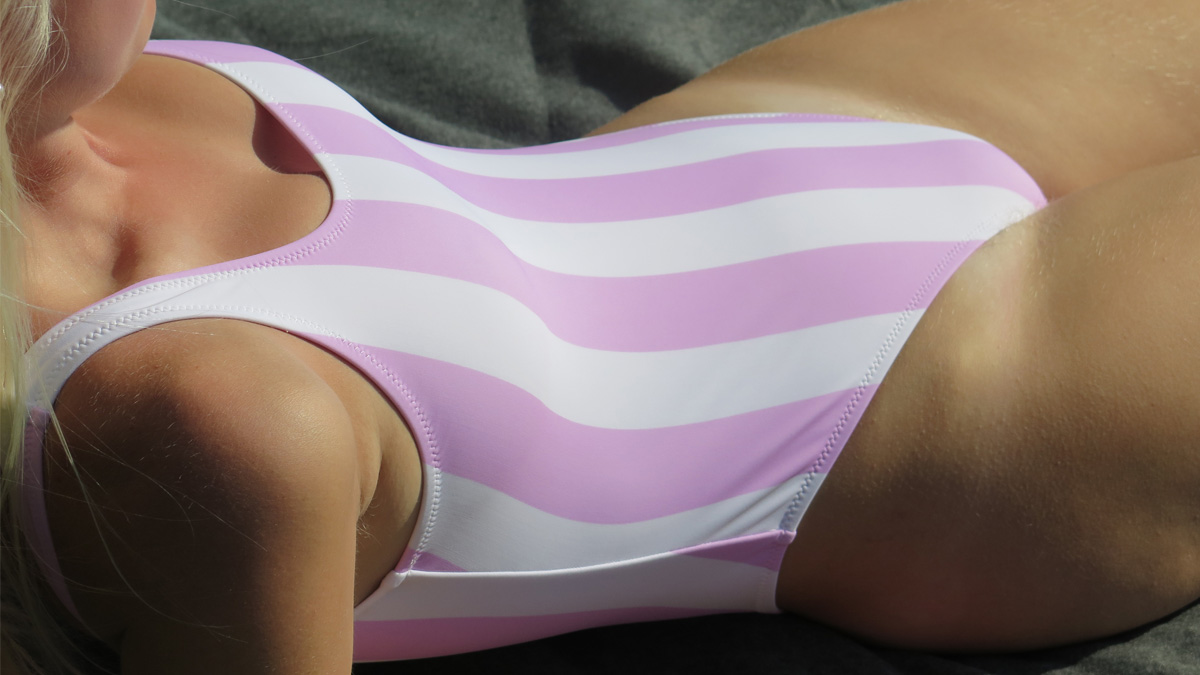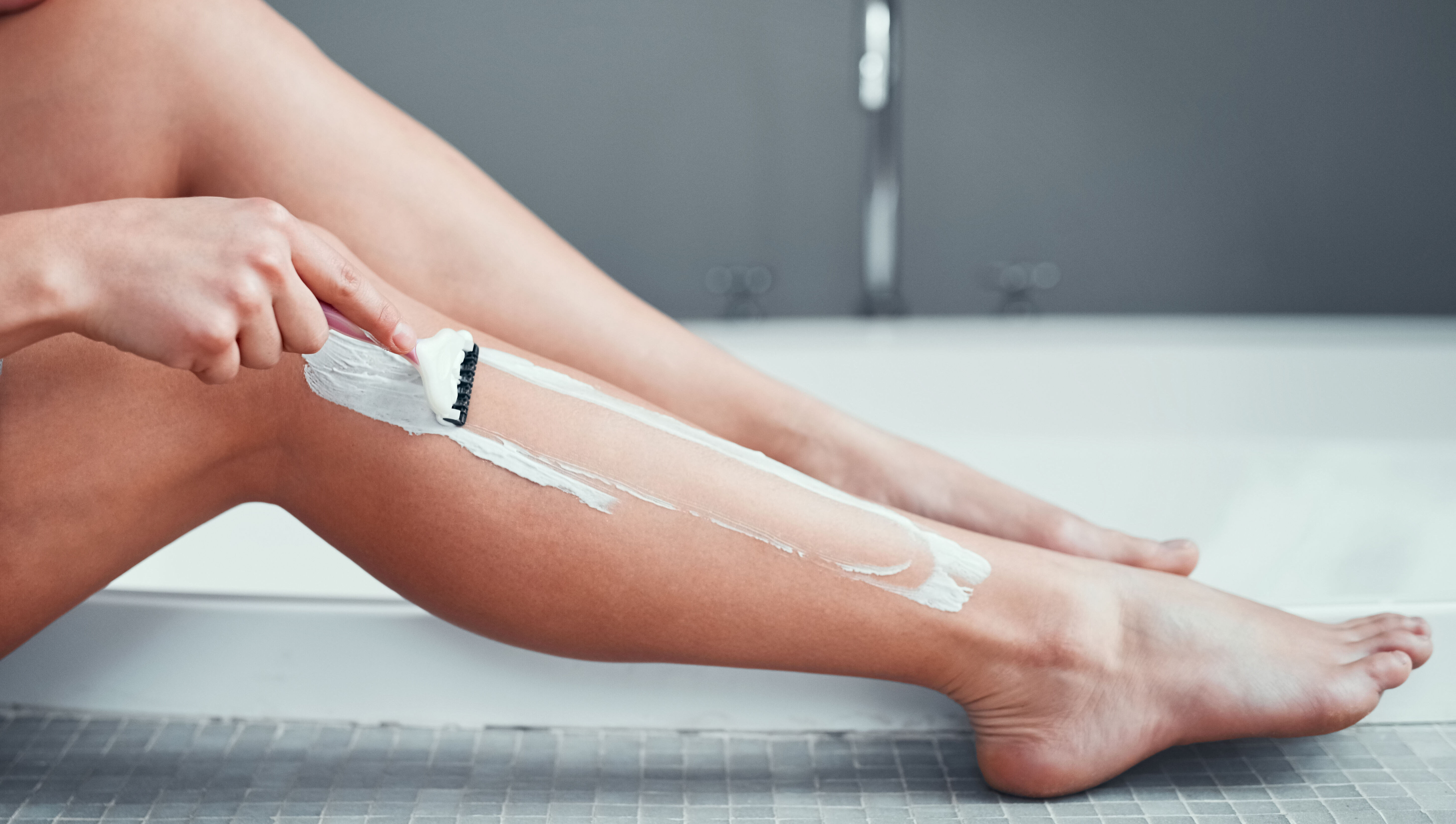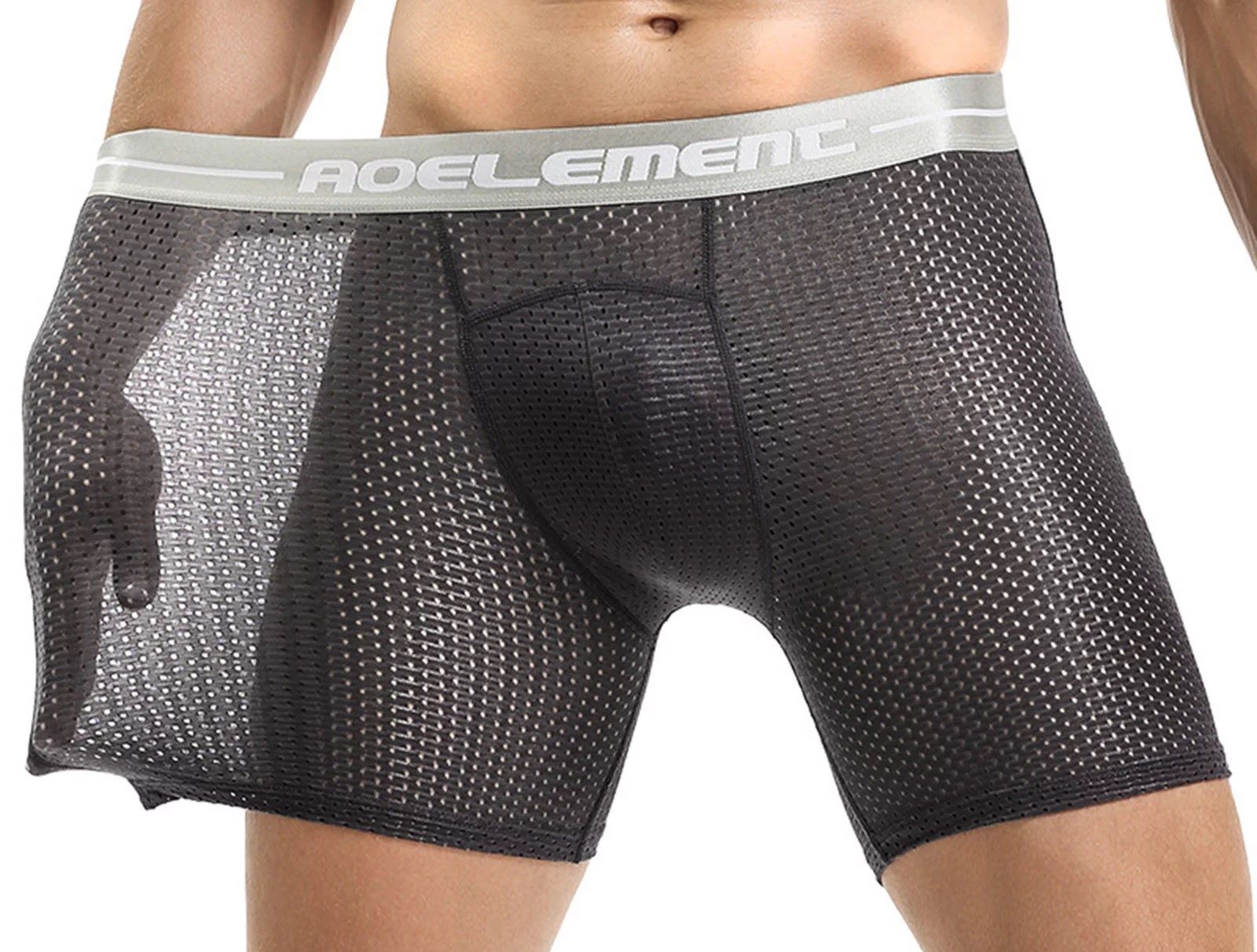Home>Women's Underwear>Swimwear>How Long Should A Swimsuit Last


Swimwear
How Long Should A Swimsuit Last
Modified: August 2, 2023
Discover the longevity of swimwear. Learn how long a swimsuit should last and find tips on extending the lifespan of your swimwear.
(Many of the links in this article redirect to a specific reviewed product. Your purchase of these products through affiliate links helps to generate commission for Under-tec.com, at no extra cost. Learn more)
Table of Contents
Introduction
Swimwear is an essential summer staple that allows us to enjoy the sun, sand, and water. Whether you’re heading to the beach, pool, or planning a tropical getaway, having a reliable swimsuit is a must. But have you ever wondered, how long should a swimsuit actually last?
The lifespan of a swimsuit can vary depending on several factors, including the quality of the material, frequency of use, and how well it’s cared for. Understanding these factors and taking proper care of your swimwear can significantly extend its lifespan, ensuring that you can enjoy your favorite swimsuit for many summers to come.
In this article, we will dive deeper into the factors that affect the lifespan of swimwear and provide tips on how to prolong its durability. Whether you’re a beach enthusiast, a competitive swimmer, or simply enjoy lounging poolside, this guide will help you make the most out of your swimsuit investment.
Factors Affecting Swimwear Lifespan
Several factors can influence the lifespan of your swimsuit. Understanding these factors can help you make informed decisions when purchasing swimwear and taking care of it. Here are the key factors that can affect the lifespan of your swimsuit:
- Material Quality: The quality of the swimsuit material plays a crucial role in determining its lifespan. Swimwear made from high-quality fabrics, such as nylon, polyester, or a blend of these materials, tends to be more durable and resistant to wear and tear. These fabrics are known for their ability to withstand exposure to chlorine, saltwater, and UV rays, making them ideal for frequent use.
- Frequency of Use: How often you wear your swimsuit can impact its longevity. If you’re an avid swimmer or spend a significant amount of time in the water, your swimsuit is likely to experience more strain and deterioration. Constant exposure to chlorine, saltwater, and sunlight can cause the fabric to fade, lose elasticity, or develop pilling. Therefore, the more frequently you use your swimsuit, the shorter its lifespan may be.
- Care and Maintenance: Proper care and maintenance are essential for extending the lifespan of your swimsuit. Rinse your swimsuit with clean water after each use to remove chlorine, saltwater, and any other residues. Avoid wringing or twisting your swimwear, as this can damage the fabric and stretch out its shape. Instead, gently squeeze out excess water and lay your swimsuit flat to dry in a shaded area to prevent fading from prolonged exposure to sunlight.
- Signs of Wear and Tear: Regularly check your swimsuit for any signs of wear and tear. Look for stretched-out elastic, thinning fabric, or loose threads. These are indications that your swimsuit may need to be replaced soon. It’s better to retire a swimsuit that is showing signs of deterioration than to risk embarrassing wardrobe malfunctions.
By understanding these factors and taking proper precautions, you can optimize the lifespan of your swimsuit. In the next section, we will explore the average lifespan of swimsuits and how to prolong their durability.
Material Quality
The quality of the material used in swimwear plays a significant role in determining how long it will last. When shopping for swimwear, it’s important to pay attention to the fabric composition and choose swimsuits made from high-quality materials.
Nylon and polyester are two common materials used in swimwear that offer excellent durability. These fabrics are known for their ability to withstand frequent exposure to chlorine, saltwater, and UV rays without losing their shape or color. They also have good stretch and recovery properties, ensuring a comfortable and supportive fit.
In addition to the fabric type, the fabric weight or thickness is also a factor to consider. Lightweight fabrics might be more prone to wear and tear compared to thicker fabrics. Look for swimsuits with a moderate thickness that strike a balance between comfort and durability.
Another aspect of material quality to consider is the presence of additional features, such as UPF (ultraviolet protection factor) rating. UPF-rated swimwear provides an extra layer of protection against harmful UV rays, helping to reduce the fading and degradation caused by prolonged sun exposure.
When purchasing swimwear online, take advantage of the product descriptions and customer reviews to gauge the quality of the materials used. Look for mentions of fade resistance, chlorine resistance, and overall durability to ensure you’re investing in a swimsuit that will last.
It’s worth noting that even high-quality swimsuits will eventually start to show signs of wear and tear after prolonged use. However, opting for swimwear made from quality materials can significantly extend its lifespan and provide you with more value for your money.
Frequency of Use
The frequency with which you use your swimsuit can have a direct impact on its lifespan. The more often you wear your swimwear, the greater the wear and tear it will endure. Here are a few factors to consider regarding the frequency of use:
Swimming Activities: If you engage in activities that involve frequent swimming, such as competitive swimming or water aerobics, your swimsuit will experience more strain. Prolonged exposure to chlorinated pool water or saltwater can cause the fabric to fade, lose elasticity, and weaken over time. Additionally, rigorous movements in the water can stretch out the fabric and strain the seams.
Seasonal Use: If you only wear your swimsuit during the summer months or sporadically throughout the year, it will naturally experience less wear and tear compared to someone who wears their swimwear year-round. However, it’s important to note that even infrequent use can still impact the lifespan of your swimsuit, especially if it’s not properly cared for and stored.
Multiple Suit Rotation: Rotating between multiple swimsuits can help prolong their lifespan. By allowing each swimsuit to rest and dry completely between uses, you can reduce the strain and potential damage caused by constant wear. Rotating your swimsuits also gives you more time to properly clean and care for each one, ensuring their longevity.
While it’s understandable that you want to make the most out of your swimsuit, it’s important to recognize that constant use will eventually take a toll on its durability. Consider investing in multiple swimsuits and rotating them to ensure that each one lasts longer.
In the next sections, we will explore the importance of care and maintenance in prolonging the lifespan of your swimsuit and discuss the signs of wear and tear to look out for.
Care and Maintenance
Proper care and maintenance are crucial for maximizing the lifespan of your swimsuit. By following a few simple guidelines, you can ensure that your swimwear stays in excellent condition for as long as possible. Here are some essential care and maintenance tips:
Rinse Immediately: After each use, rinse your swimsuit with clean, cool water. This helps remove chlorine, saltwater, sand, and any other impurities that can deteriorate the fabric over time. Avoid using hot water as it can damage the fabric and elastic components.
Gentle Handwash: To clean your swimsuit, handwashing is the best method. Use a mild detergent specifically designed for delicates or swimwear. Gently scrub the swimsuit and rinse thoroughly until all soap residue is gone. Avoid using harsh chemicals, bleach, or fabric softeners as they can damage the fabric and affect the elasticity.
Avoid Wrinkling or Twisting: When handling wet swimwear, avoid wringing or twisting it, as this can stretch out the fabric and damage the elastic. Instead, gently squeeze out excess water and lay the swimsuit flat on a towel to remove any remaining moisture.
Dry in Shade: Direct sunlight can cause the colors of your swimsuit to fade and weaken the fabric. After washing, lay your swimsuit flat to dry in a shaded area. Avoid hanging it up to dry, as this can cause stretching and distortion of the fabric and elastic.
Avoid Rough Surfaces: When wearing your swimsuit, be mindful of the surfaces you sit or lie on. Rough surfaces like concrete, rocks, or wooden pool decks can snag and damage the fabric. Use a towel or beach mat to create a protective barrier between your swimsuit and the surface.
Store Properly: When you’re not using your swimsuit, store it in a cool, dry place away from direct sunlight. Avoid folding it with any sharp objects, buttons, or zippers that could damage the fabric. If possible, store your swimsuit flat to maintain its shape and elasticity.
By following these care and maintenance tips, you can significantly extend the lifespan of your swimsuit. However, it’s essential to be aware of the signs of wear and tear that indicate it’s time to replace your swimwear.
Signs of Wear and Tear
Regularly inspecting your swimwear for signs of wear and tear is crucial in determining when it’s time to replace it. Here are some common signs to look out for:
Elasticity Loss: Over time, the elastic components of your swimsuit can lose their stretch and become loose. If you notice that the straps, leg openings, or waistbands are no longer providing a snug fit, it may be a sign that the elastic has degraded. A lack of elasticity can result in an ill-fitting and less supportive swimsuit.
Fading and Discoloration: Prolonged exposure to chlorine, saltwater, and sunlight can cause the colors of your swimsuit to fade. If you notice significant fading or discoloration, especially in areas that are exposed to the sun or chemicals, it may be an indication that the fabric has started to deteriorate. Fading can also affect the overall appearance of the swimsuit.
Pilling: Pilling refers to the formation of small balls or fuzz on the fabric’s surface. It can occur when the fabric rubs against rough surfaces or due to frequent use and washing. Pilling not only affects the appearance of the swimsuit but can also create a rough texture that may feel uncomfortable against the skin.
Thinning Fabric: With repeated use and exposure to harsh conditions, the fabric of your swimsuit may become thin or worn out. You might notice that the fabric feels flimsy or transparent in certain areas, indicating that it’s weakened. Thin fabric is more prone to tearing and may not provide adequate coverage or support.
Loose Threads or Seams: Inspect your swimsuit for any loose threads or seams that are coming apart. Loose threads can lead to further unraveling, and damaged seams can compromise the structural integrity of the swimsuit. It’s important to address any loose threads or seams as soon as possible to prevent further damage.
If you notice any of these signs of wear and tear on your swimsuit, it may be time to replace it. Continuing to use a worn-out swimsuit increases the risk of wardrobe malfunctions and discomfort. Investing in a new swimsuit will ensure that you have a reliable and comfortable option for your next water adventures.
Next, we will discuss the average lifespan of swimsuits and provide some tips to prolong their durability.
Average Lifespan of Swimsuits
The lifespan of a swimsuit can vary depending on various factors, including the quality of the material, frequency of use, and how well it’s cared for. On average, a well-made swimsuit can last anywhere from 6 months to 2 years with regular use.
For those who frequently swim in chlorinated pools or saltwater, the lifespan of a swimsuit may be shorter due to the harsh exposure. Chlorine, in particular, can accelerate the breakdown of fabric fibers and elastic components, leading to faster deterioration.
However, if proper care and maintenance routines are followed, it’s possible to extend the lifespan of your swimsuit. For example, rinsing your swimsuit immediately after use, handwashing with a gentle detergent, and drying it in a shaded area can all contribute to its longevity.
Additionally, opting for swimsuits made from high-quality materials, such as nylon or polyester blends, can increase their durability. These materials are known for their resistance to chlorine, saltwater, and UV rays, which can help preserve the integrity of the fabric over time.
It’s important to note that while the average lifespan of a swimsuit falls within a specific range, individual experiences may vary. Some swimsuits may last longer than 2 years with proper care, while others may need replacement sooner depending on how they are used and cared for.
Keep in mind that signs of wear and tear, such as loss of elasticity, significant fading, or thinning fabric, are indications that your swimsuit is reaching the end of its lifespan. It’s crucial to assess the condition of your swimsuit regularly and replace it when necessary to ensure both comfort and modesty.
In the next section, we will provide some practical tips on how to prolong the lifespan of your swimsuit and maximize its durability.
Prolonging the Lifespan of Swimsuits
While the average lifespan of a swimsuit is influenced by various factors, there are several steps you can take to extend its longevity. By following these tips, you can enjoy your favorite swimsuit for even longer:
- Rinse Immediately: After each use, rinse your swimsuit with clean water to remove chlorine, saltwater, and other impurities. This helps prevent chemical damage and discoloration.
- Handwash with Care: Gently handwash your swimsuit using a mild detergent specifically designed for delicates or swimwear. Avoid using harsh chemicals or bleach, as they can degrade the fabric.
- Avoid Excessive Heat: Prolonged exposure to heat can weaken the fabric and elastic of your swimsuit. Avoid hot water, excessive sun exposure, and high heat from dryers or heaters.
- Dry Flat in Shade: After rinsing, gently squeeze out excess water and lay your swimsuit flat to dry in a shaded area. Avoid hanging it up, as this can stretch out the fabric and elastic.
- Rotate Swimsuits: Using multiple swimsuits and rotating them can reduce wear and tear. This allows each swimsuit to rest and dry completely between uses, extending their overall lifespan.
- Avoid Rough Surfaces: Be mindful of the surfaces you sit or lie on while wearing your swimsuit. Rough surfaces like concrete or rocky edges can snag and damage the fabric.
- Store Properly: When not in use, store your swimsuit in a cool, dry place away from direct sunlight. Avoid folding it with sharp objects or storing it with any items that could cause snags or damage.
- Consider a Swimwear Cover-up: Wearing a swimwear cover-up, especially when lounging or taking breaks from swimming, can help protect your swimsuit from unnecessary damage and prolong its lifespan.
- Invest in Quality: Choosing high-quality swimsuits made from durable materials can make a significant difference in their lifespan. Look for swimwear with features like chlorine resistance and UPF rating for added protection.
- Regularly Assess for Wear: Keep an eye on your swimsuit for any signs of wear and tear, such as faded colors, thinning fabric, or stretched-out elastic. Addressing these signs early can help prevent further damage.
By following these tips and adopting a proactive approach to care and maintenance, you can significantly prolong the lifespan of your swimsuit. With proper care, your favorite swimwear can accompany you on countless beach adventures and poolside lounging sessions.
Now that you understand how to take care of your swimsuit and extend its lifespan, you can confidently make informed purchasing decisions and enjoy your swimwear for years to come.
Conclusion
Swimwear is not only a fashion statement but also a functional necessity for enjoying the water. Understanding the factors that affect the lifespan of swimsuits and taking proper care of them can help you make the most out of your swimwear investment.
We explored the importance of material quality and how high-quality fabrics like nylon and polyester blends can provide durability and resistance to chlorine, saltwater, and UV rays. We also discussed the impact of frequency of use on a swimsuit’s lifespan, emphasizing the need for rotation and proper care for optimal longevity.
Caring for your swimsuit involves rinsing it immediately after use, handwashing it gently with mild detergent, and drying it flat in a shaded area. Avoid exposing it to excessive heat or rough surfaces, and store it properly to prevent damage. Regularly assessing your swimwear for signs of wear and tear will help you determine when it’s time to replace it.
By following these guidelines, you can extend the lifespan of your swimsuit, ensuring its comfort, support, and appearance for many seasons. Additionally, investing in quality swimwear and considering features like chlorine resistance and UPF rating can further enhance its durability.
Remember that while the average lifespan of a swimsuit falls within a certain range, your individual experience may vary. By focusing on care and maintenance, you can maximize the longevity of your swimwear and continue to enjoy its benefits for an extended period.
So go ahead, confidently dive into the water, soak up the sun, and embrace the joy of wearing a well-maintained swimsuit that will accompany you on all your aquatic adventures!









